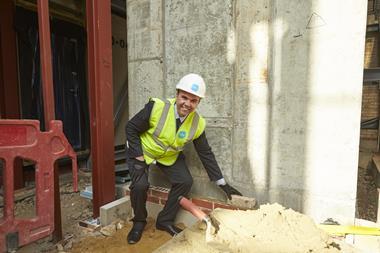Offsite manufacturing: it’s been poised to transform housebuilding for at least 30 years.

I’m told it’s now definitely poised to transform housebuilding. Will it this time round?
Possibly. It depends on whether investors’ pockets are deep enough to fund production over complete cycles, not just the two or three years in each boom when politicians and pundits periodically work themselves up into a lather about factory-built housing. As they now seem to be doing again.
Property Week broke the story that Theresa May’s government could give a multi-billion-pound stimulus to housing’s supply side, in contrast to her predecessors’ fixation with incentivising the demand side, via Help to Buy.
Property Week has also reported that ministers are so enamoured with offsite manufacturing that they have discussed the government actually building a plant to support what could be its own direct development, while the London mayor Sadiq Khan is considering similar plans.

Forgive my sense of déjà vu. ‘Pod housing’ and its variants were politicians’ Next Big Thing when I was a technology reporter for Building magazine three decades ago, along with self-build and airports in the Thames Estuary, which still have dogged advocates in government. However, this time could be different: at least the production facilities are appearing.
The first home kits have started rolling off the new 550,000 sq ft Yorkshire facility commissioned by L&G Homes, and contractor Laing O’Rourke has a state-of-the-art Explore Manufacturing plant in Derbyshire.
The rationale behind offsite housing production is persuasive. The economies of scale should reduce unit costs, and production is much faster, with higher certainty of delivery and greater technical standardisation. Units can be assembled on site in days and production is less hostage to the elements or hold-ups. Less time on site means houses get built faster; thus a greater return on capital employed. At least, that’s the theory.
This scenario applies when markets are strong. It is also when manufacturers or developers generally decide to pile into offsite production. Various housebuilders have tried their hand, often with dismal results.
Where next for housebuilding? Join the debate at RESI 2016 this September
There’s a particular risk when the manufacturing plant has been set up by a developer or contractor, rather than an independent producer.
I’m told Laing O’Rourke’s recent series of construction divison losses were in part due to pressure from on high within the group to use its own factory-produced panels during the lean early years of this decade, when it would have cost less to employ conventional methods.
L&G, or indeed the government, as a developer, should avoid the temptation of cross-subsidising its manufacturing operations.
Step-change in housing volumes
Fortunately, the insurer’s development thrust is predominantly in the PRS sector. This is one form of tenure that seems made for offsite production. Time is everything in build to rent. Developers can’t market rental flats ‘off plan’, so the quicker they can get them built, the quicker they can rent them out and generate returns on not inconsiderable upfront investments.
By contrast, traditional developers usually seem content to deliver units at the arguably pedestrian norm of around 0.7 per site per week.
Should the market turn down, they can simply trim production of individual homes, whereas institutional build to rent is typically in large blocks, so the all-or-nothing approach benefits from timely and efficient construction.
Maybe the industry will need the government’s deep pockets if, as the PM insists, there will be a step-change in housing volumes.
Alastair Stewart is an equities analyst and columnist































No comments yet